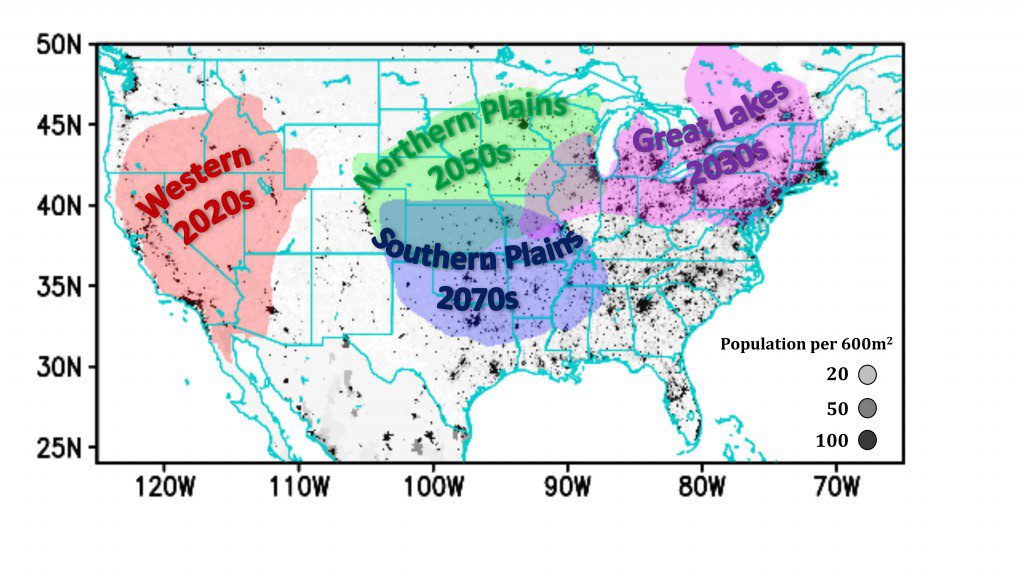AOML scientists, Hosmay Lopez and his colleagues used observations as well as model simulations of 20th Century climate and 21st Century projections to show that the occurrence of heat waves in the U.S. are on the rise and will continue to do so in the coming decades. This research was recently published in Nature Climate Change.
The number and severity of heat waves have increased in recent decades and is projected to continue increasing into the 21 st Century. Population growth coupled to the fact that extreme heat is the leading weather-related cause of death in the US call for the need to identify the relative roles of natural variability and human-caused climate change on these extremes. Therefore, knowledge on the Time of Emergence (ToE), or the years that the human contributions to climate change will become more important than natural variability in causing heat waves, is crucial for better mitigation and adaptation efforts. The ToE is geographically dependent, where some regions may experience earlier influence of climate change than others. Given this, we identified the most common heat wave patterns over the US by the use of clustering of extreme events by their spatial distribution.
The study shows that there are four regions of the United States where human-caused climate change will ultimately overtake natural variability as the main driver of heat waves. Climate change will drive more frequent and extreme summer heat waves in the Western United States by late 2020’s, the Great Lakes region by mid 2030’s, and in the northern and southern Plains by 2050’s and 2070’s, respectively (see Figure below). The later onset of climate change-fueled heat waves across the Great Plains is found to be a result of projected increase of the Great Plain low-level jet and moisture transport, attenuating the surface warming associated with climate change. In contrast, a projected reduction in storminess over the Western and Great Lakes regions will increase the possibility of heat waves there, exacerbating the mean temperature increase due to climate change, thus producing earlier ToE.

This study is part of a larger effort to better predict heat waves. Understanding the driving forces behind heat waves is crucial for informing public health security and extreme heat mitigation strategies. Research has tended to focus on predicting extremes such as tornadoes or hurricanes when heat waves are actually causing many more weather-related deaths in our country. This study help fills that gap and develop effective heat wave prediction to help communities be better prepared.
Reference
Lopez, H., R. West, S. Dong, G. Goni, S.-K. Lee, B. P. Kirtman, and R. Atlas (2018): Early emergence of anthropogenically-forced heat waves in the western US and Great Lakes. Nature Climate Change, doi: 10.1038/s41558-018-0116-y. [Link to Manuscript]
